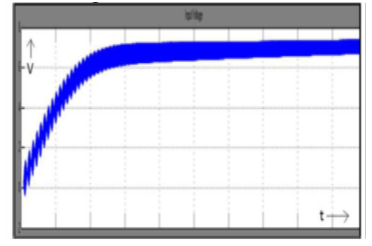Design of Fuzzy Logic Based
Maximum Power Point Tracking Controller for Solar Array for Cloudy Weather
Conditions.
ABSTRACT:
This
paper proposes Maximum Power Point Tracking (MPPT) of a photovoltaic system
under variable temperature and solar radiation conditions using Fuzzy Logic Algorithm.
The cost of electricity from the PV array is more expensive than the
electricity from the other non- renewable sources. So, it is necessary to operate
the PV system at maximum efficiency by tracking its maximum power point at any
weather conditions 111. Boost converter increases output voltage of the solar
panel and converter output voltage depends upon the duty cycle of the MOSFET
present in the boost converter. The change in the duty cycle is done by Fuzzy
logic controller by sensing the power output of the solar panel. The proposed
controller is aimed at adjusting the duty cycle of the DC-DC converter switch
to track the maximum power of a solar cell array. MATLABI Simulink is used to
develop and design the PV array system equipped with the proposed MPPT
controller using fuzzy logic 12][31. The results show that the proposed
controller is able to track the MPP in a shorter time with less fluctuation.
The complete hardware setup with fuzzy logic controller is implemented and the
results are observed and compared with the system without MPPT (Fuzzy logic
controller).
KEYWORDS
1. MPPT
2. Fuzzy Logic Control
3. DC-DC Converter,
4. Photo
voltaic systems.
SOFTWARE: MATLAB/SIMULINK
BLOCK DIAGRAM:
Fig.
1. Block diagram of MPPT of PV array.
EXPECTED SIMULATION RESULTS:
Fig.
2. Power Vs output voltage
Fig.
3. Voltage Vs Current output of solar panel
Fig.
4. Output voltage of the solar panel without MPPT.
Fig.
5. Output of the solar panel with MPPT FLC under cloudy weather conditions.
Fig.
6. PWM output when driven by FLC
CONCLUSION:
This
paper presents an intelligent control method of tracking maximum power and Simulation
and hardware result show that proposed MPPT controller increases the efficiency
of the PV array energy conversion efficiency. Results are compared with the
panel without MPPT controller.
REFERENCES:
[I]
Chetan Singh Solanki," Solar Photo Voltaics ", PHI Learning pvt. Ltd
,2009.
[2]
Bor-Ren Lin,"Analysis of Fuzzy Control Method Applied to DCDC Converter
controf' , IEEE Prowe .h g APK'93, pp. 22- 28,1993.
[3]
Rohin M.Hillooda, Adel M.Shard,"A rule Based Fuzzy Logic controller for a
PWM inverter in Photo Voltaic Energy Conversion Scheme", IAS'SZ,
PP.762-769, 1993.
[4]
Pongsakor Takum, Somyot Kaitwanidvilai and Chaiyan Jettasen ; 'Maximum POlVer
Point Tracking using jilzzy logic control for photovoltaic systems.'
Proceedings Of International Multiconference of Engineers and Computer
scientists ,Vol 2,March 2011.
[5]
M.S.Cheik , Larbes, G.F Kebir and A ZerguelTas; 'Maximum power point tracking
using a jilzzy logic control scheme.'; 'Departement d'Electronique', Revue des
Energies Renouvelables, VoI.lO,No 32 , September 2007, pp 387-395





